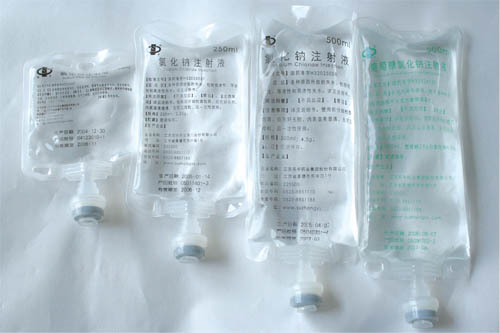Source: Link Testing Instruments Co., Ltd
There are two main categories of infusion bags: PVC and Non-PVC. Today most of the non-PVC infusion bags are made of multi-layer copolymerized compound membrane, which contains PP, PE, PA and SEBS, etc. Non-PVC is the safest material of infusion bag by now. It is free of plasticizer, which doesn’t adsorb or react with the liquid medicine. Non-PVC infusion bag is featured with high barrier properties to gas and moisture. In addition, only water and carbon dioxide will be produced by burning the discarded non-PVC infusion bags, which is environment friendly. Owing to all the advantageous features mentioned above, non-PVC infusion bag has been widely used in medical treatment.
However, such kind of infusion bags are often broken during transportation and storage. The tensile property and seal performance of the edges are the main factors that may influence the breakage ratio of the non-PVC infusion bags. Therefore, it is necessary to test the tensile strength and burst strength of the infusion bags before use.
This article provides a simplified test method of tensile strength and burst strength of the non-PVC infusion bag for your reference. The test specimens are glucose infusion bag made of non-PVC composite films. The testing instrument used for the tests are Link Testing’s LTS-05 Auto Tensile Tester and LTY-03 Leak and Seal Strength Tester.

Figure 1. Non-PVC Infusion Bags
The tensile strength tests shall be performed according to the following procedures.
The burst strength tests shall be performed according to the following procedures.
For more details about Link Testing’s LTS-05 Auto Tensile Tester and LTY-03 Leak and Seal Strength Tester, please visit www.linktesting.org
About Link Testing Instruments Co., Ltd:
Link Testing Instruments Co., Ltd is one leading supplier of packaging testing instruments, which is headquartered in Jinan, China.